1. Custer State Park, South Dakota
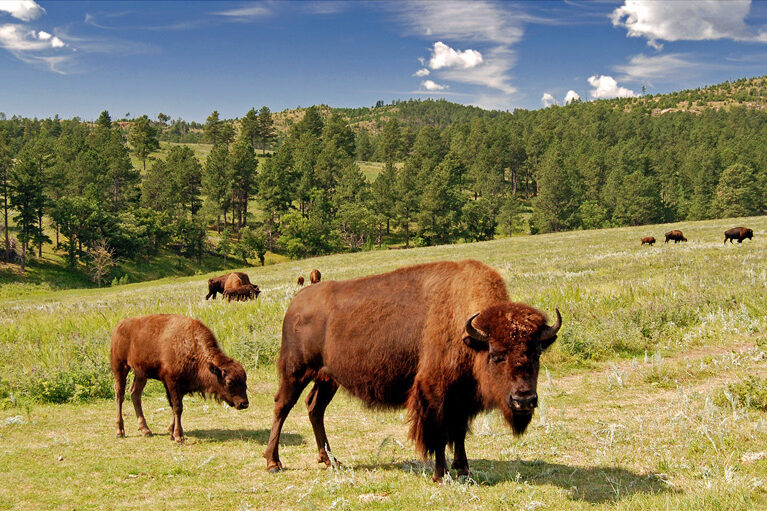
Custer State Park, located in the Black Hills of South Dakota, is one of the best places in the U.S. to see bison up close. The park is home to a massive herd of over 1,300 bison that roam freely across the rolling plains and pine forests. The Wildlife Loop Road offers an excellent chance to see these animals, as well as pronghorn antelope, elk, and wild burros.
Mountain lions and bobcats also inhabit the park, though they are more elusive. Coyotes, deer, and prairie dogs are commonly seen throughout the grasslands. The annual Buffalo Roundup, held every September, is a spectacular event where visitors can watch cowboys and cowgirls drive the bison herd across the prairie. Custer State Park is a must-visit for wildlife enthusiasts looking for an unforgettable experience in the heart of the Great Plains.
2. Grand Teton National Park, Wyoming
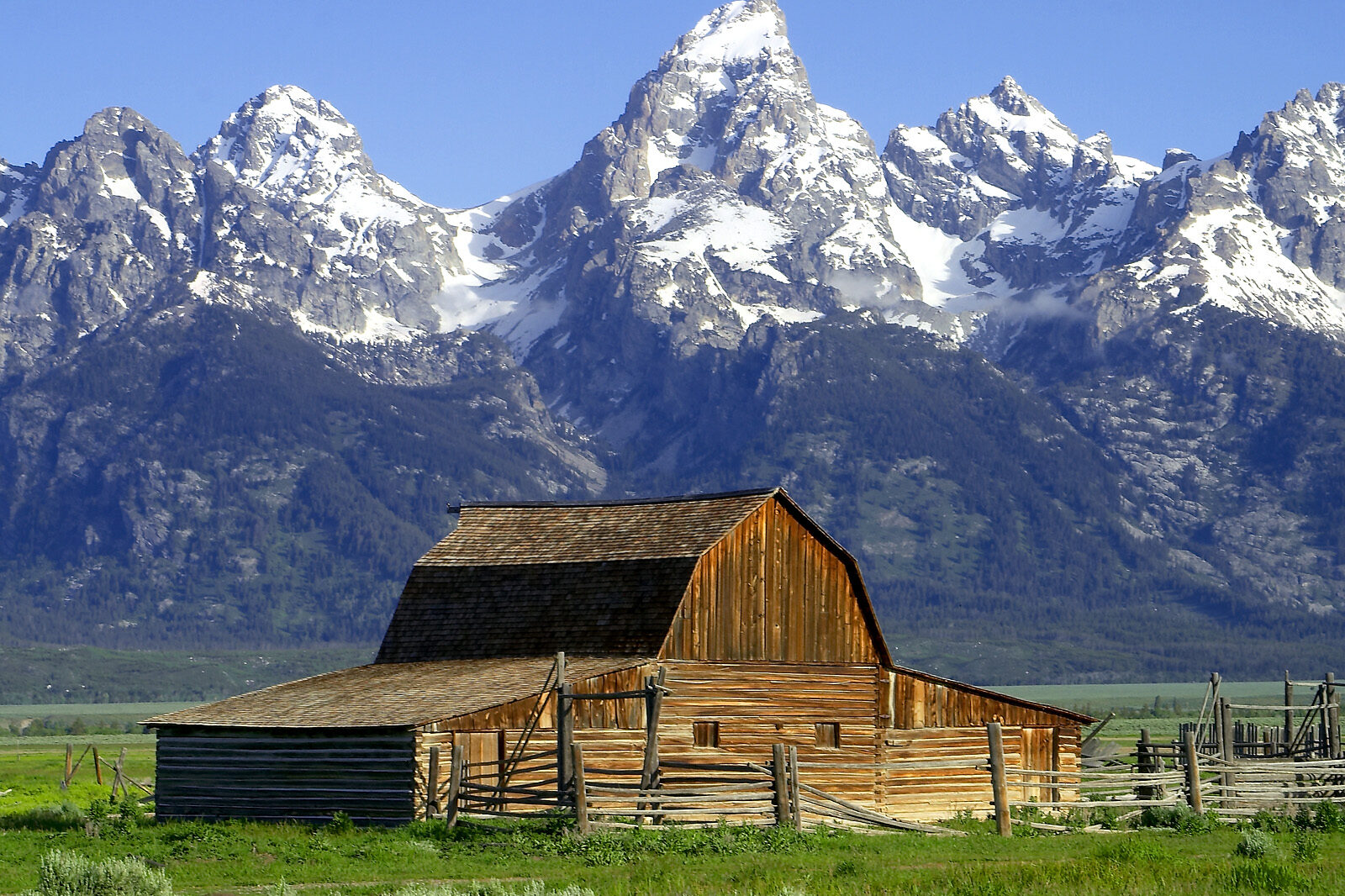
Just south of Yellowstone, Grand Teton National Park offers stunning mountain scenery and incredible wildlife viewing. The park’s mix of dense forests, alpine lakes, and open meadows creates the perfect habitat for large mammals, according to the National Park Service. Grizzly bears and black bears are frequently seen along the Snake River and near Signal Mountain, particularly in the early morning and late evening.
Moose are another highlight in Grand Teton, and they can often be spotted near Willow Flats and along the Gros Ventre River. These massive animals are most active during the cooler hours of the day. Elk are also abundant in the park, with large herds gathering in the meadows near Jenny Lake. The park’s roads provide excellent viewing opportunities, and rangers suggest driving slowly and scanning the edges of forests and waterways for movement.
3. Rocky Mountain National Park, Colorado
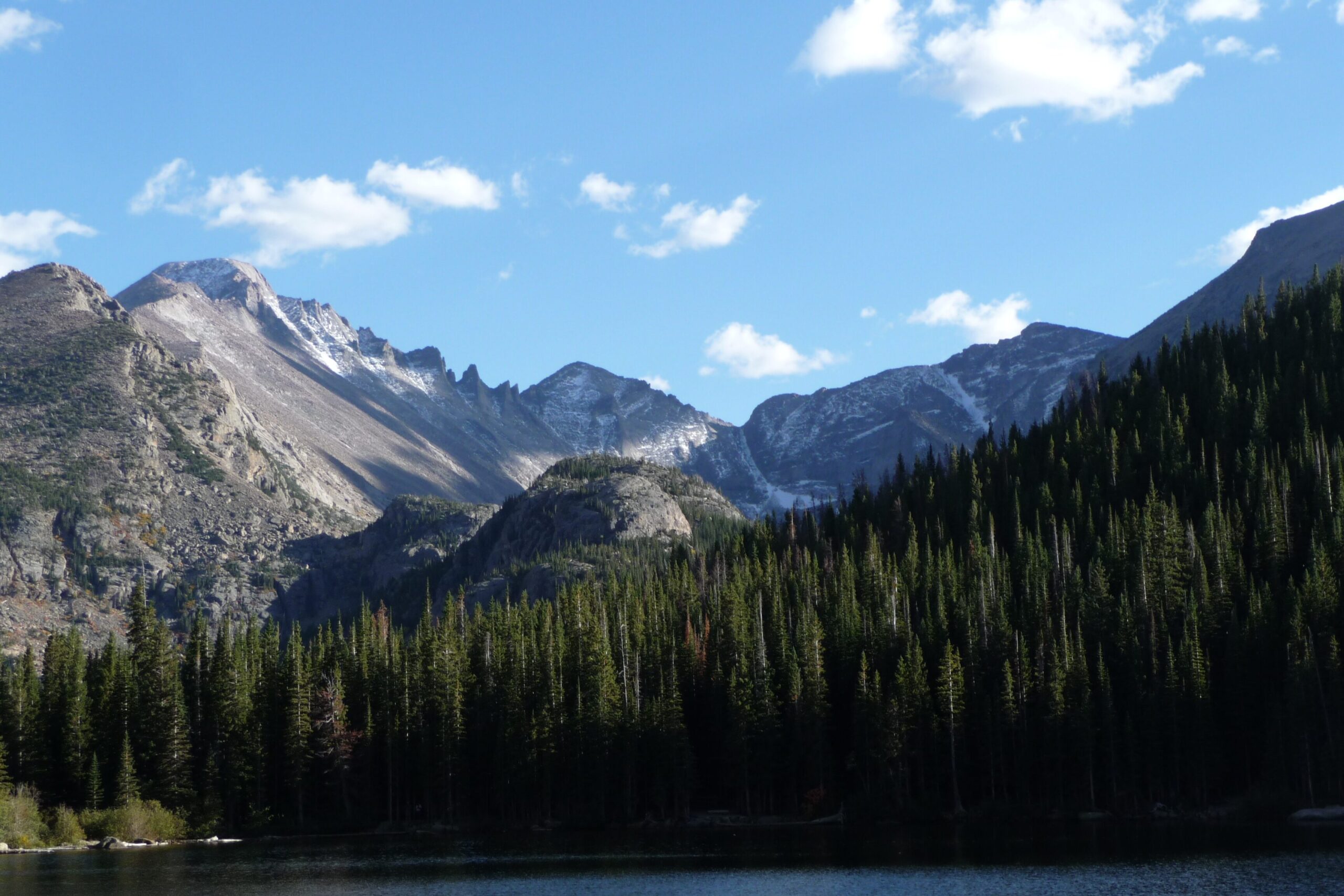
Rocky Mountain National Park in Colorado is one of the best places to see elk, especially during the fall rutting season. Every September and October, thousands of elk gather in the park’s meadows, and their eerie bugling calls can be heard echoing through the valleys. The best places to spot elk are Moraine Park, Horseshoe Park, and the Kawuneeche Valley.
Mountain lions, though rarely seen, roam the park’s backcountry. While sightings are uncommon, rangers recommend looking for tracks along the more remote trails, according to National Park Service. Bighorn sheep can often be found near the cliffs of the Sheep Lakes area. For the best chance at seeing wildlife, drive Trail Ridge Road at sunrise or sunset when animals are most active.
4. Glacier National Park, Montana

Glacier National Park is one of the top locations in the Rocky Mountains for spotting grizzly bears. The park’s vast wilderness, high alpine meadows, and glacial valleys provide an ideal habitat for these powerful predators. According to the Glacier Park Collection, Glacier has a higher density of grizzly bears than any other national park in the lower 48 states. Many grizzlies are spotted along Many Glacier Road and near Logan Pass, especially during late summer when they forage for berries.
Mountain goats are another iconic species in Glacier, frequently seen climbing the steep cliffs along the Highline Trail. Black bears are also common, often appearing near forested areas and campgrounds. Rangers advise visitors to carry bear spray and make noise while hiking to avoid surprise encounters.
5. Jackson Hole, Wyoming

Jackson Hole is a year-round wildlife hotspot, but winter brings some of the most dramatic animal encounters. According to Noble House Hotels, winter is prime time for spotting wildlife as animals congregate in the valley for easier living. The National Elk Refuge, located just outside the town, hosts thousands of elk that migrate down from higher elevations in search of food. Visitors can take horse-drawn sleigh rides through the refuge for an up-close look at these massive animals.
Wolves are frequently seen in the surrounding areas, particularly in the Gros Ventre Wilderness. Bald eagles and trumpeter swans can also be spotted along the Snake River. For those visiting in winter, a guided wildlife tour can increase the chances of seeing these majestic animals in their natural environment.
6. Waterton Lakes National Park, Canada
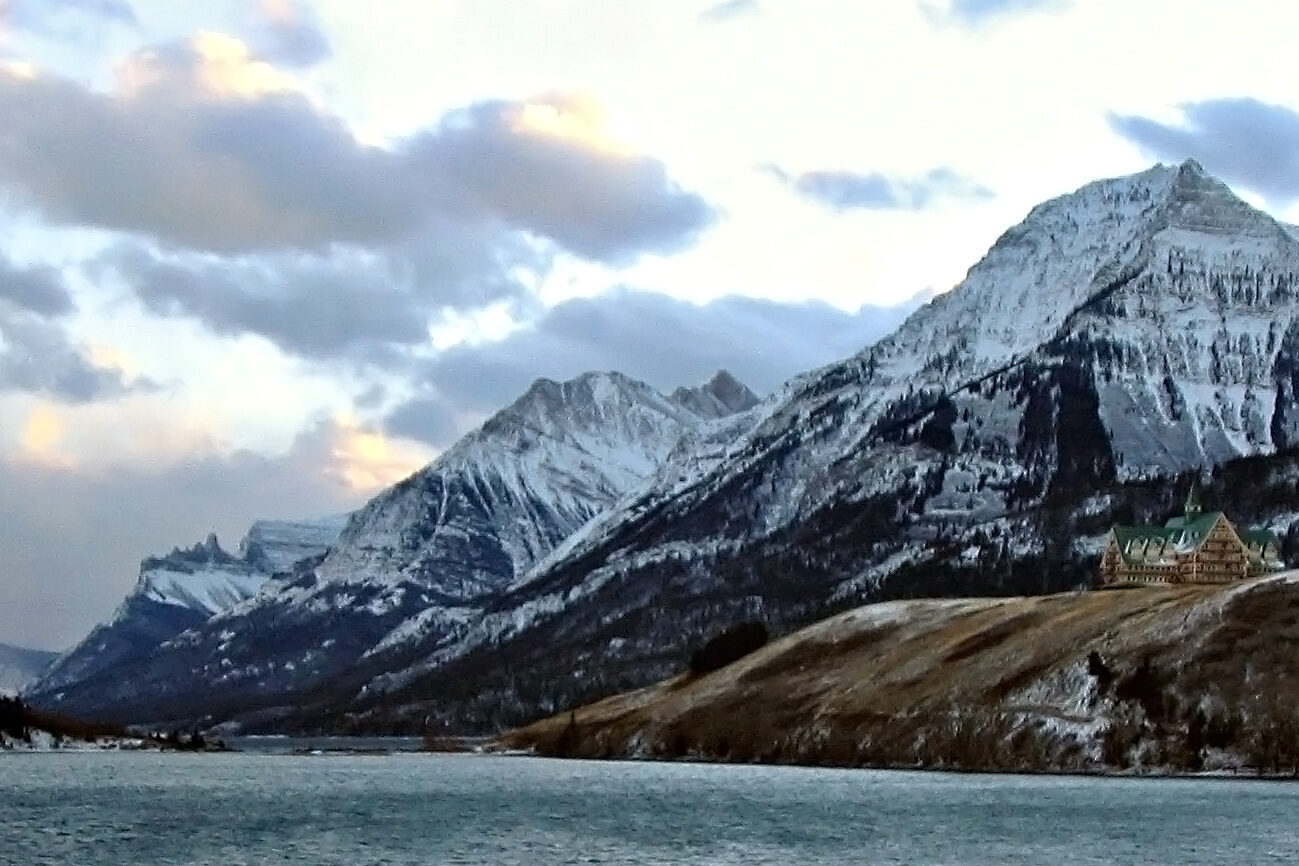
Waterton Lakes National Park, located just across the border in Canada, offers a unique blend of mountain and prairie ecosystems, making it an excellent place for wildlife spotting. Bears—both grizzly and black—are commonly seen along the Red Rock Parkway and near Cameron Lake.
The park is also home to large herds of bison, which roam the prairie grasslands. Bighorn sheep and mountain goats can often be spotted along hiking trails. Because of its remote location, Waterton Lakes is less crowded than other parks, providing a more peaceful wildlife watching experience.
7. Yellowstone’s Northern Range—A Prime Wolf-Watching Spot
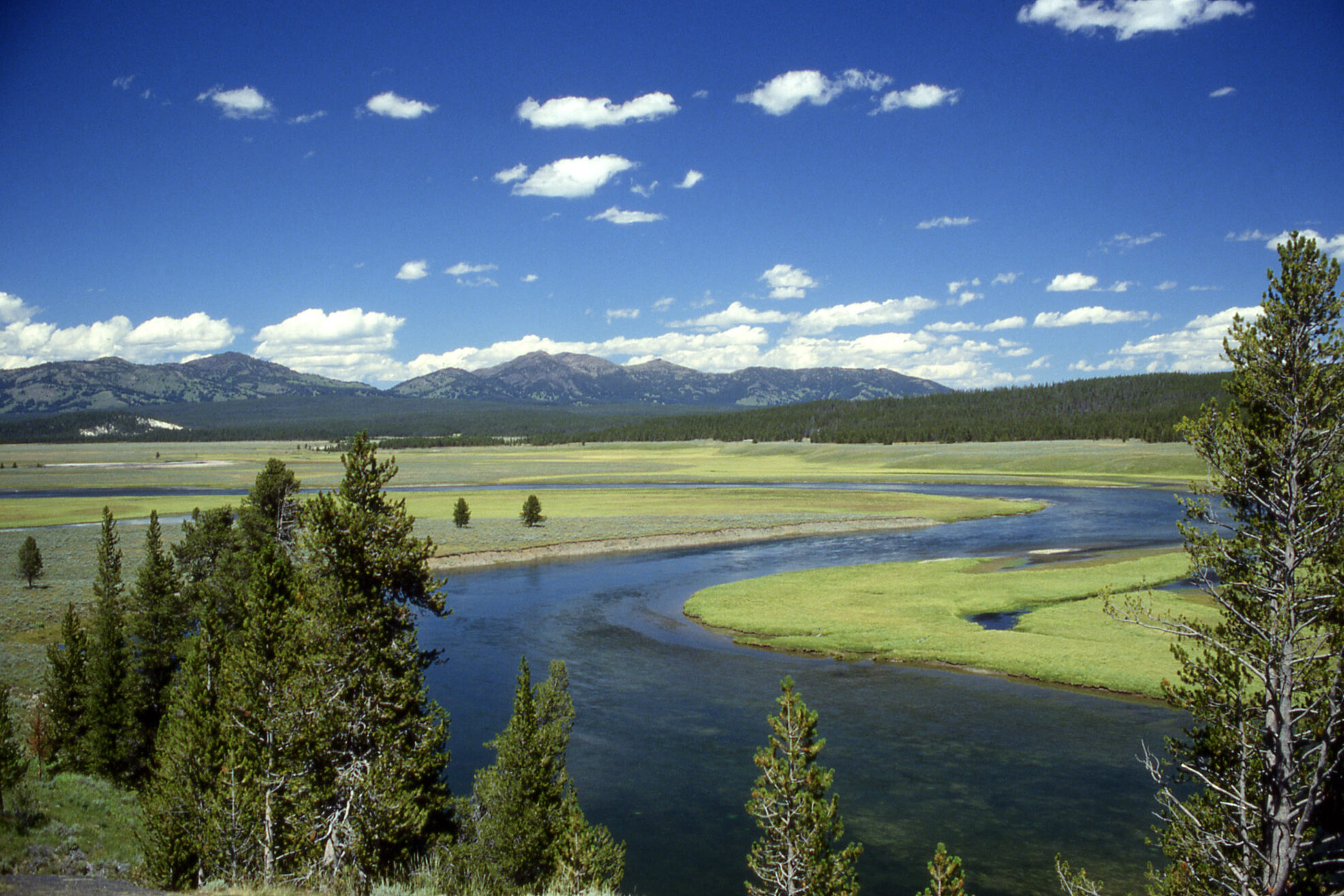
For those particularly interested in wolves, the northern range of Yellowstone is the best place in the Rocky Mountains to see these elusive predators. The Lamar Valley and Slough Creek areas are well known for wolf activity, with several packs roaming the region.
Park rangers suggest arriving before sunrise and using a spotting scope to scan the ridges and meadows for movement. Wolves are most active in the early morning and evening, and winter provides some of the best chances for sightings as the dark-coated animals stand out against the snowy landscape.
8. Banff National Park, Canada
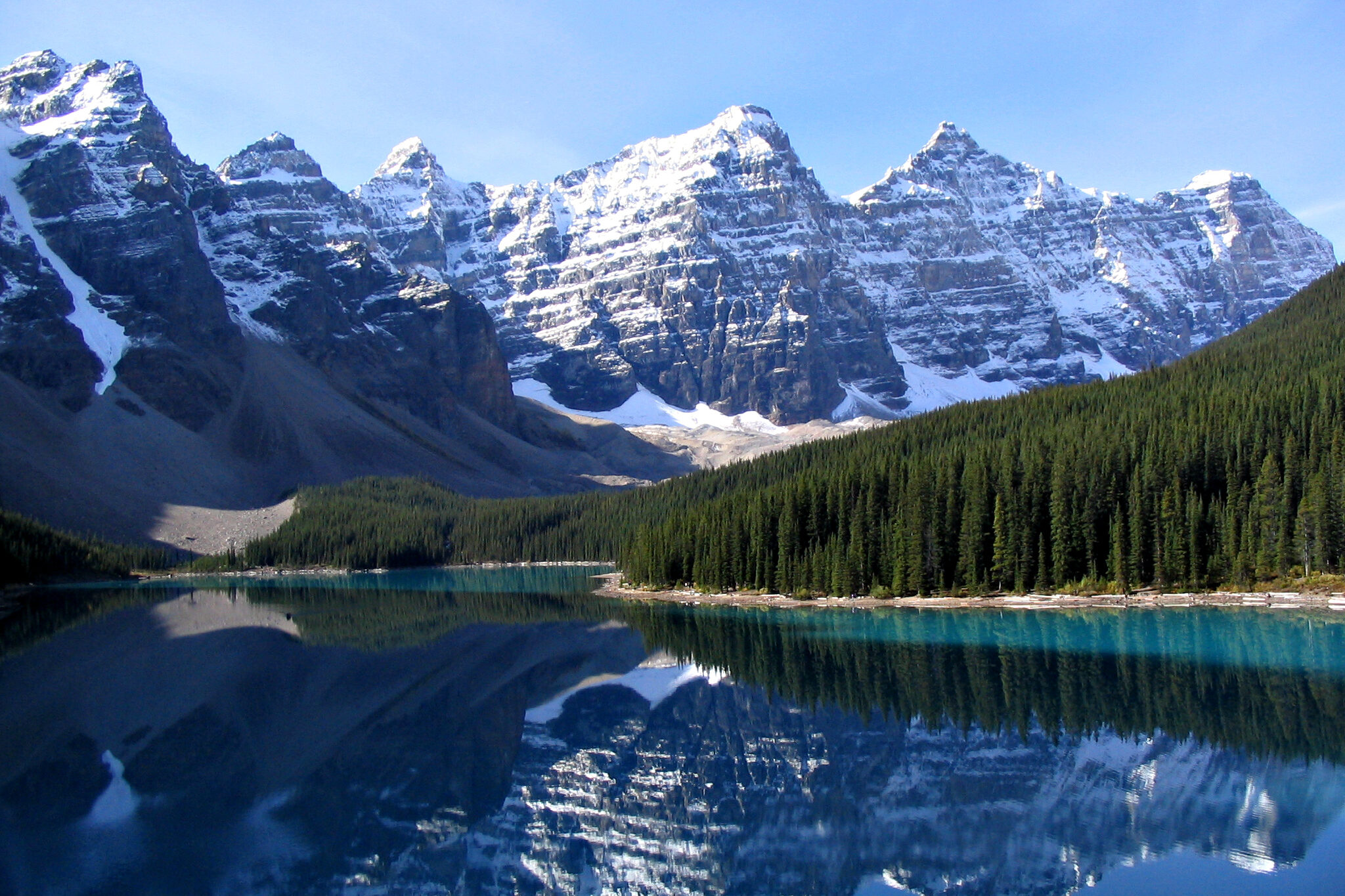
Banff National Park, located in the Canadian Rockies, is one of the best places to see grizzly bears in North America. The park’s vast wilderness provides plenty of space for these animals to roam, and they are often seen along the Icefields Parkway and near Lake Louise.
Elk are also abundant in Banff, frequently spotted in the meadows near the town of Banff and along Bow Valley Parkway. Wolves, while more elusive, are sometimes seen in the early morning or late evening hours. Wildlife enthusiasts should drive the scenic highways slowly and keep an eye on the roadside, as animals frequently cross these areas.
9. Kootenay National Park, Canada
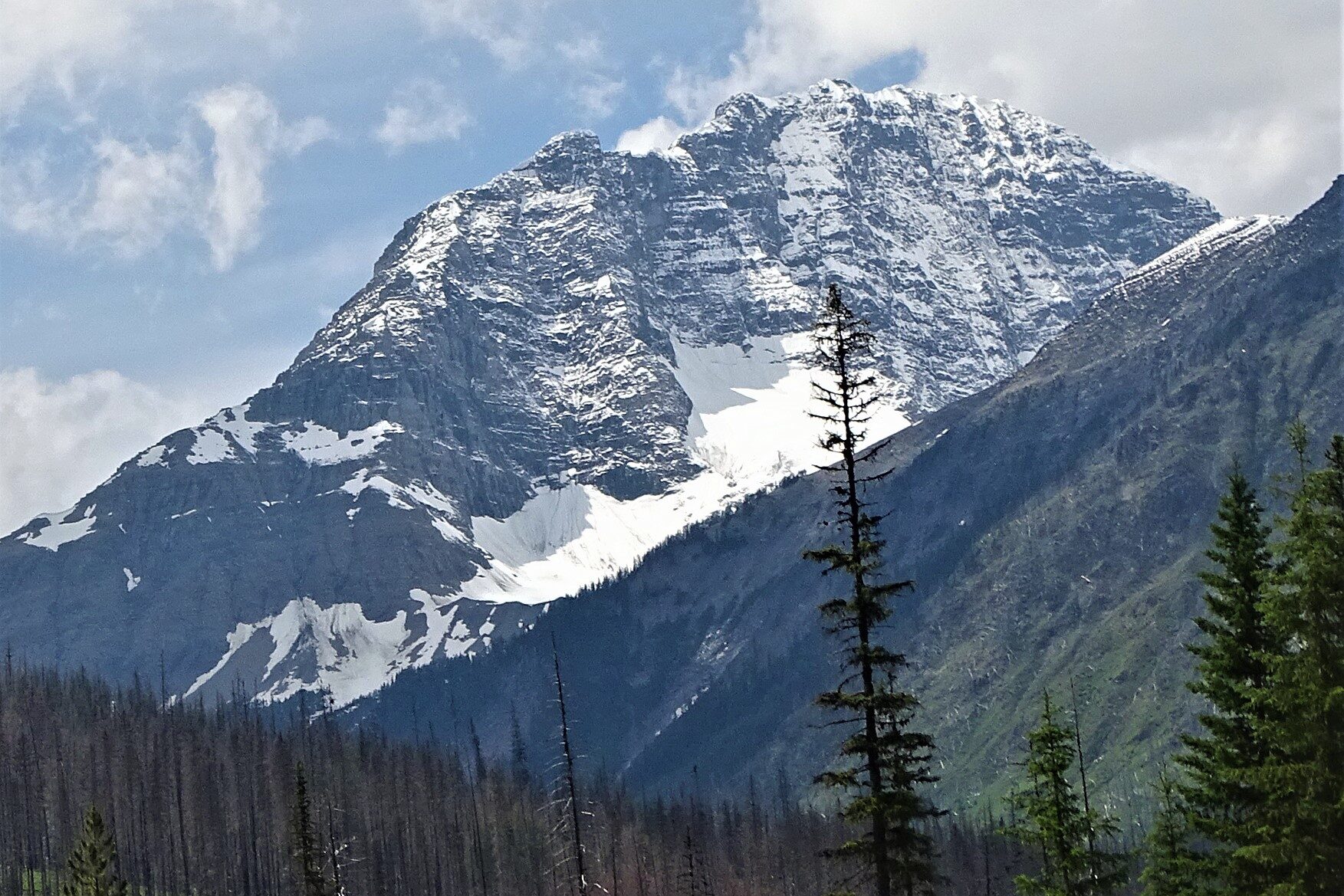
Kootenay National Park, located in British Columbia, is one of the lesser-known parks in the Canadian Rockies, making it a fantastic spot for peaceful wildlife viewing. The park’s dense forests and river valleys provide habitat for grizzly bears, black bears, and moose. One of the best places to see wildlife is along the Kootenay Parkway, especially at dawn and dusk.
Bighorn sheep are frequently spotted near Radium Hot Springs, where they gather on rocky slopes. Elk and deer can be seen grazing in the park’s meadows, while elusive cougars and lynx roam the backcountry. Rangers advise visitors to carry bear spray and practice safe hiking habits, as encounters with large predators are not uncommon.
10. Theodore Roosevelt National Park, North Dakota
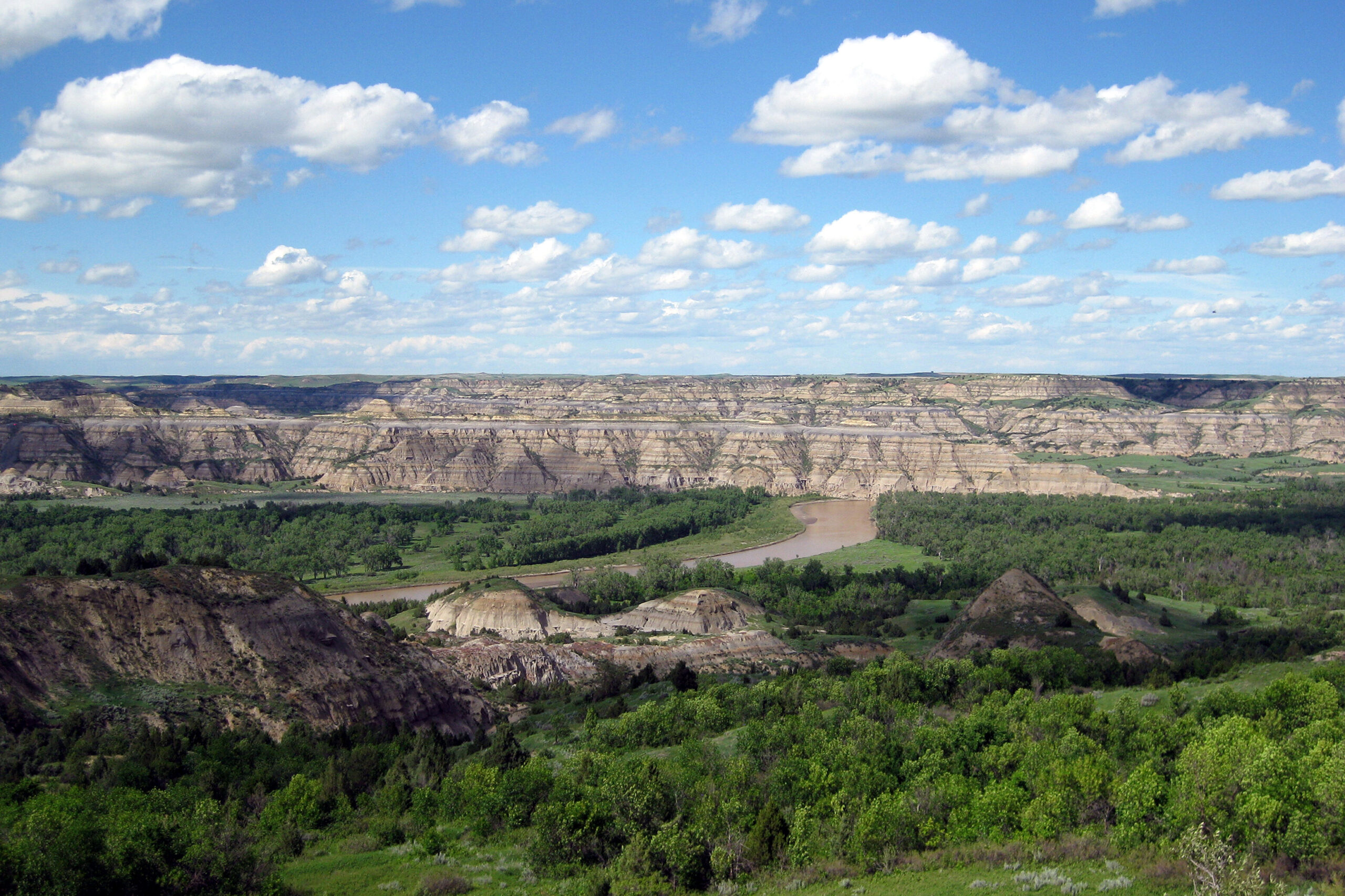
While not traditionally part of the Rocky Mountains, Theodore Roosevelt National Park is a hidden gem for wildlife enthusiasts. The park, located in the North Dakota Badlands, is home to one of the largest free-roaming bison populations in the U.S. Herds of these massive animals can be seen throughout the park’s rolling grasslands and rugged cliffs.
Wild horses also roam the park, offering a rare chance to see these majestic creatures in the wild. Coyotes, prairie dogs, and golden eagles are frequently spotted, while mountain lions lurk in the park’s more remote areas. The scenic loop drive through the park provides excellent wildlife viewing opportunities, especially during the cooler hours of the day.
11. Jasper National Park, Canada
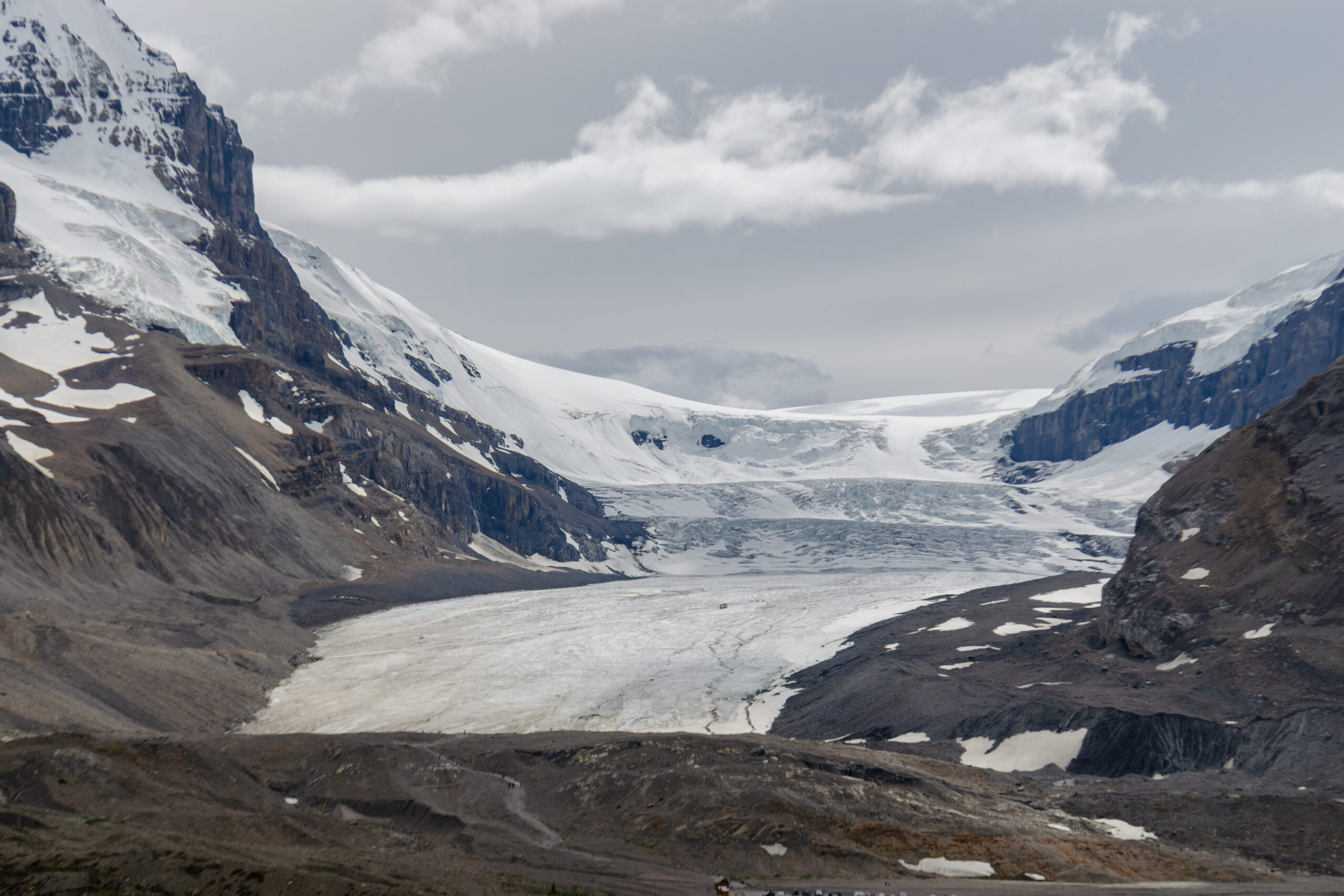
Jasper National Park is one of the best places in Canada to see a wide variety of wildlife. With its vast wilderness, alpine lakes, and dense forests, the park is home to grizzly bears, black bears, wolves, and elk. One of the best areas for wildlife spotting is along the Icefields Parkway, where bears are often seen foraging near the roadside.
The Maligne Lake area is a prime spot for seeing moose, while bighorn sheep can often be found near the cliffs of Medicine Lake. Wolves are more elusive but can occasionally be spotted at dawn or dusk in the park’s remote valleys. Rangers recommend keeping a respectful distance and using binoculars for the best viewing experience.
12. Bridger-Teton National Forest, Wyoming
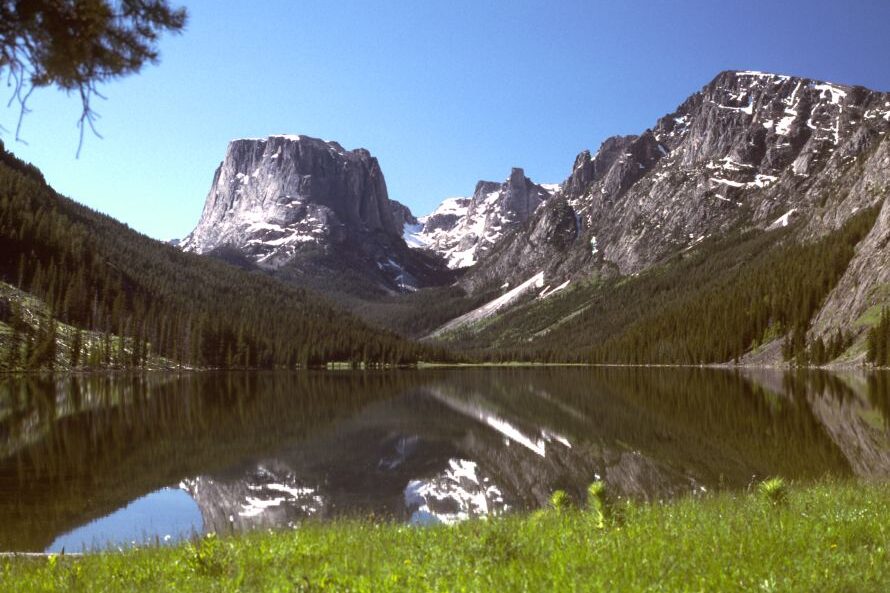
Bridger-Teton National Forest, located near Grand Teton National Park, offers an off-the-beaten-path experience for wildlife lovers. With over 3.4 million acres of protected land, this forest is home to grizzly bears, black bears, elk, and moose. The Gros Ventre Wilderness area is a particularly good spot to see wildlife without the crowds of nearby national parks.
Wolves also roam the region, and while sightings are rare, their howls can often be heard echoing through the valleys. The forest’s remote location makes it one of the best places in the Rockies for spotting wildlife in a truly wild setting. Visitors should be well-prepared for backcountry travel and follow all safety precautions when exploring bear country.
13. Yellowstone National Park, Wyoming

Yellowstone National Park is one of the most famous wildlife destinations in the world, making it the perfect starting point for a Rocky Mountain road trip. Covering over 2.2 million acres, the park is home to grizzly bears, black bears, wolves, bison, and elk. According to the National Park Service, the Lamar Valley, often called the “Serengeti of North America,” is the best place to spot wolves, especially at dawn and dusk. These elusive predators, reintroduced to Yellowstone in 1995, have become one of the park’s biggest attractions.
For those hoping to see bears, the Hayden Valley is a prime location, particularly in spring and early summer when grizzlies emerge from hibernation. Black bears are commonly seen near Tower-Roosevelt and Mammoth Hot Springs. Bison herds roam freely across the park, often causing traffic jams as they cross the roads. Rangers recommend bringing binoculars or a spotting scope to observe these animals from a safe distance.


